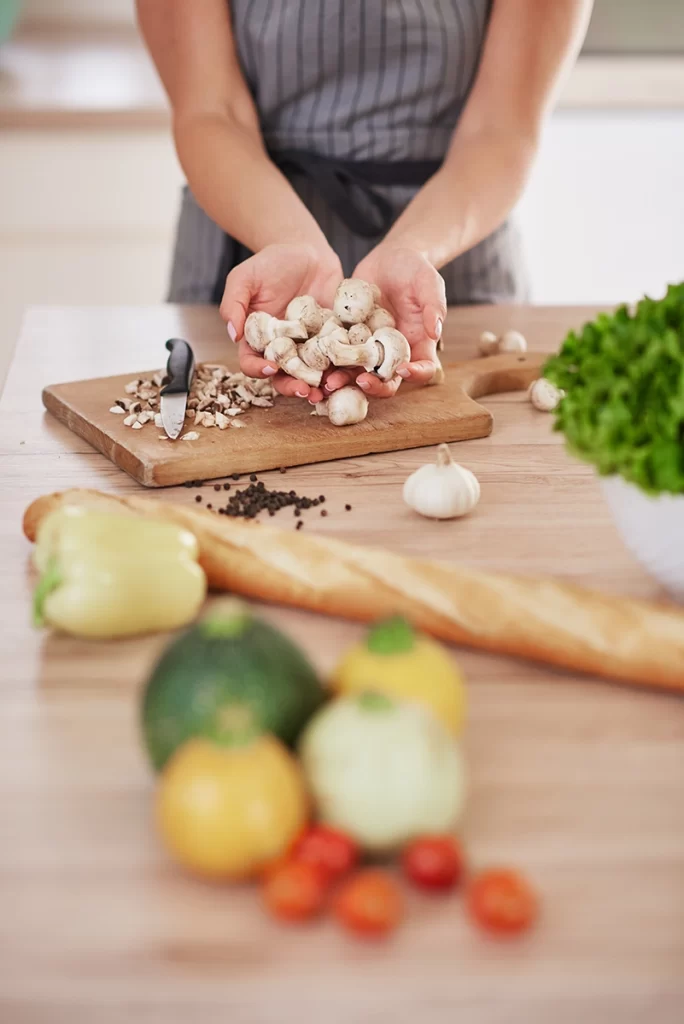Wood vs Plastic Cutting Board Showdown: The Ultimate Kitchen Battleground
Listen up, kitchen warriors! We’re about to dive headfirst into the ultimate showdown – the battle of the cutting boards. It’s a clash of titans, a showdown of sanitary proportions, and we’re here to help you emerge victorious in the war for kitchen supremacy.
First, let’s address the age-old debate: wood or plastic? Wooden cutting boards, with their natural antibacterial properties, have been kitchen MVPs for ages. These bad boys can actually kill off bacteria, thanks to their porous surface and wood acids. Just make sure you’re cleaning them properly (more on that later).
Plastic cutting boards, on the other hand, are non-porous and dishwasher-safe, making them a convenient choice for busy bees. However, they can harbor nasty germs if you get a little too lazy with the cleaning routine.
But wait, there’s more! Let’s not forget the other contenders in this culinary battleground.



Other cutting-board contenders
Silicone cutting boards are the flexible, non-porous rookies on the block. They’re easy to clean and nearly impossible to slice through, making them a great option for clumsy chefs.
Wood fiber or bamboo cutting boards offer a sustainable, eco-friendly alternative. They’re tough, renewable, and can withstand daily wear and tear like champs.
Glass cutting boards are the sleek, modern choice. They’re non-porous, easy to clean, and make chopping a breeze. Just be careful not to crack them!
Wood vs Plastic Cutting Board, Convenience and Sanitation
Now, let’s talk convenience. Wooden boards require a bit more TLC, but they’re sturdy and can last for decades if treated right. Plastic boards are lightweight and easy to maneuver, but they may need replacing more often due to deep grooves and scratches (which can harbor bacteria).
Quick Cleaning Practices
Wooden Boards: After each use, scrub with hot, soapy water and let air dry. Occasionally, give them a deep clean by sprinkling coarse salt and rubbing with a lemon (the acidity helps kill bacteria).
Plastic/Silicone Boards: Pop them in the dishwasher or soak in a bleach solution for a few minutes before scrubbing.
Glass/Bamboo Boards: Use a dedicated cutting board cleaner or hot, soapy water and a non-abrasive sponge.
Shortcut Prep Pluses
- Invest in a few boards of different sizes and materials for various tasks (chopping veggies, slicing meat, etc.)
- Keep a damp towel or paper towel handy to wipe the board as you go.
- Use a bench scraper to quickly transfer chopped ingredients to your pot or pan.
More Types of Cutting Boards
Epicurean Cutting Boards (wood-composite, dishwasher-safe)
OXO Good Grips Cutting Boards (non-porous plastic, textured surface)
John Boos Maple Cutting Boards (end-grain wood, ultra-durable)
Sili Stretch Silicone Cutting Boards (flexible, non-slip)
Bamboo Cutting Board Set (eco-friendly, antimicrobial)
Glazed Ceramic Cutting Board (stylish, easy to clean)
In Conclusion, Wood vs Plastic Cutting Board
In conclusion, the choice of cutting board material comes down to personal preference, cleaning habits, and culinary needs. Whichever you choose, remember to treat your board like a treasured kitchen companion, and it will serve you well for years to come in the ultimate battleground – your kitchen!

Join us on Facebook at Sherry Kay Cooks!
